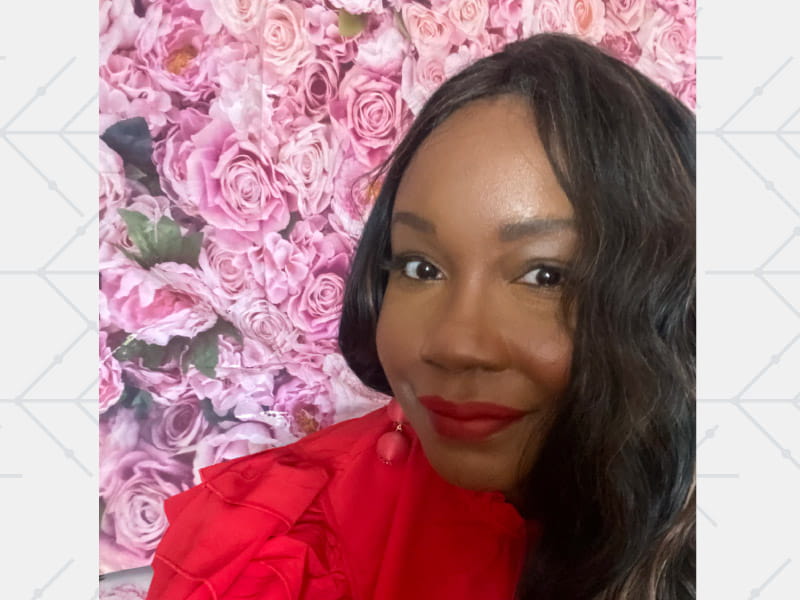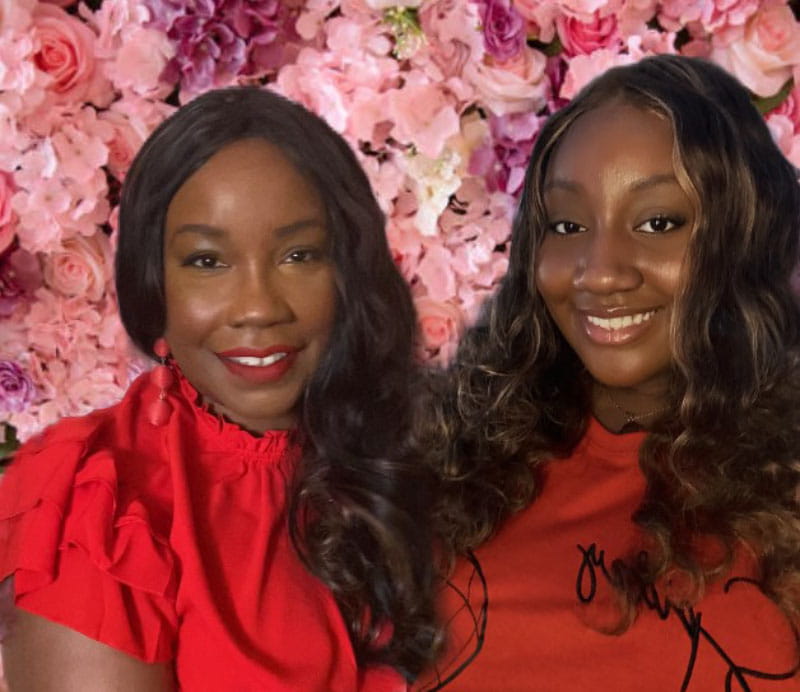A heart artery tore weeks before her due date, putting the lives of mom and baby at risk
By Deborah Lynn Blumberg, American Heart Association News

Nearly nine months pregnant, Nefertari Nelson-Williams sunk into her sofa after a long Sunday caring for her four kids. She clicked on the TV and flipped to her favorite show of late, TLC's "A Baby Story."
Although she was an experienced mom, watching episodes of pregnancy complications was a good reminder that every birth and baby are different.
As she watched, she was thankful she and her baby were healthy. She knew from an ultrasound that she was having a fourth girl.
After the episode, she rolled over to get up. A sharp pain shot through her midsection. It was too high to be labor. When she spilled onto the floor, the pain disappeared. Moments later, it came back. It felt like an elephant crushing her chest.
She struggled to take a deep breath. Her husband, Shawn Williams, helped her up. Panicked, he tried putting on a brave face for the kids.
In the hospital, doctors confirmed that Nefertari wasn't in labor. Yet she gasped for air. For hours, and overnight, the otherwise healthy 34-year-old sat in a hospital room as medical staff tried to figure out why she couldn't take deep breaths.
The next morning, a cardiologist appeared at her bedside. He suspected she'd had a heart attack caused by a spontaneous coronary artery dissection. SCAD happens when a coronary artery wall suddenly tears, slowing or blocking blood flow to the heart. It's more common in women and often linked to physical or emotional stress.
Her heart was also enlarged. Dead heart muscle had formed an aneurysm, a bulging weak spot that could rupture at any moment. Nefertari slipped in and out of consciousness as a helicopter rushed her from a New Jersey hospital to the University of Pennsylvania's hospital in Philadelphia, which was better equipped to care for her.
She woke up in the critical care unit with all sorts of tubes protruding from her arms and doctors surrounding her bed. "You're a very sick lady," one said.
Additional testing had confirmed it was SCAD. Nefertari's heart was barely pumping any blood. Doctors placed three stents into her heart to open collapsed arteries, helping blood flow.
The doctor delivered unthinkable news: "You're stable now, but between you and your baby, we may only be able to save one of you."
Nefertari's baby thumped and she felt sick to her stomach.
A few days later, a doctor stormed into her room. Dr. Michal Elovitz, then an attending physician in Maternal Fetal Medicine at the Hospital of the University of Pennsylvania, shooed everyone away and stooped down by Nefertari's bed.
"I'm not losing you or this baby," Elovitz said, her hand on Nefertari's cheek.
"Everything's gonna be all right," said Nefertari, her eyes filling with tears.
Elovitz slept in the hospital until Nefertari went into labor a week later. It happened on Nefertari's mother's birthday, a significant one since her mom the prior year had a stroke that caused partial paralysis.
"What kind of music do you like?" Elovitz asked her in the operating room.
"Jazz and club," Nefertari said.
As club music blasted from speakers, Nefertari lost blood, her blood pressure plunged and her lungs filled with fluid. Her heart stopped several times and the medical team had to resuscitate her. Her heart was functioning at only 6% of its capacity. (Normal is at least 55%.)
"Neffie, you promised me a baby," Elovitz said, loudly.
Minutes later, she held a baby girl to Nefertari's face. "You did it," she told her.
"We did it," replied Nefertari.
Shayna Williams arrived at nearly 38 weeks. Nefertari returned to critical care as nurses dressed the baby in a onesie covered in pink roses that Nefertari had picked out weeks earlier.
Over the next two weeks, Nefertari endured strep throat, double pneumonia and a bacterial infection. Gradually, she and Shayna both got stronger and healthier. They were well enough to go home on Nefertari's daughter Olivia's eighth birthday.
Nefertari traveled about an hour each way to visit the Philadelphia hospital every few days for checkups on her heart. She also learned she has Ehlers-Danlos syndrome, a connective tissue disorder that can weaken the heart's arteries. Five months after giving birth, she received in her chest an implantable cardioverter defibrillator, or ICD. The device will deliver an electric charge to her heart if it falls out of rhythm.
Still, 16 years after the dramatic ordeal, Nefertari lives with advanced congestive heart failure, a condition in which the heart can't pump blood well enough to meet the body's normal supply. Her heart pumps only 35% of blood with each contraction. She still has the aneurysm, too.
"I walk slowly and sit most of the day, but I'm a diva in my own right," said Nefertari, who lives in Willingboro, New Jersey. Her daughters visit often to do her hair and makeup, and she loves dressing up.

A former teaching assistant, Nefertari enjoys sharing her story – mostly online – and educating people about SCAD. "Everyone with SCAD should be treated as if they're having a massive heart attack," she said, "because there's no downside to that, but there is a downside to taking a wait-and-see approach."
Shayna, who's 16, has Ehlers-Danlos syndrome as well. She started seeing a cardiologist and takes medicine for her increased heart rate. Shayna excels in school, hopes to work in the food industry, maybe as a chef, and joins Nefertari for her new hobby of archery.
"My mom made me a great person," Shayna said. "She has a beautiful spirit, and she always has a positive attitude."

Nefertari has discussed a heart transplant with her doctors. But for now, her heart is still stable enough that she doesn't need to go on the transplant waiting list. In the meantime, she literally stops to smell every flower. "I have hope and faith," she said.
"I love people, I love fall and the rustling of the leaves, hearing children laugh when they're walking home from school," she said. "I was always a bubbly person, but now I'm even happier, and I'm so grateful to still be here on this earth. I find myself being thankful for every single moment."
Stories From the Heart chronicles the inspiring journeys of heart disease and stroke survivors, caregivers and advocates.





